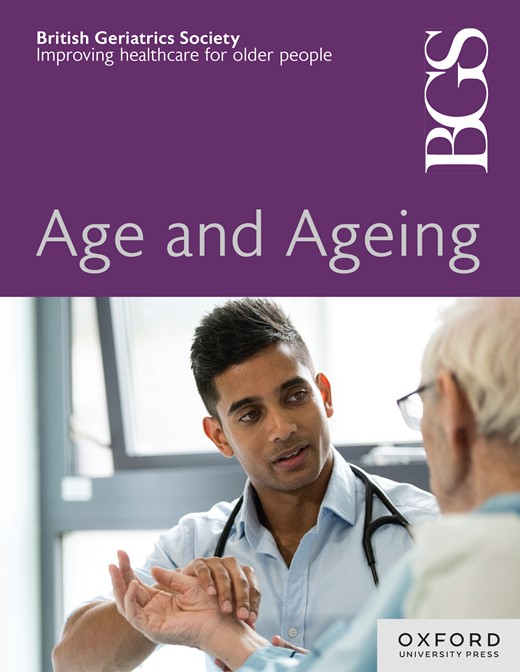Educated peers’ experiences and perceptions of the group-based FallFitness exercise programme for older adults
IF 7.1
2区 医学
Q1 GERIATRICS & GERONTOLOGY
引用次数: 0
Abstract
Introduction Despite evidence supporting the effectiveness of exercise-based fall prevention interventions, implementing these programmes in practice remains challenging. Peer-led exercise programmes have demonstrated effectiveness in delivering fall prevention education to older adults. Therefore, this study aimed to explore older adults’ experiences of being trained and serving as peer leaders in a group-based fall prevention exercise programme, focusing on the skills and qualities required for leadership. Additionally, the study sought to identify facilitators and barriers influencing training and the programme’s long-term implementation. Materials and methods Participants were recruited from a randomised controlled trial. Two focus group interviews were conducted with 13 participants from the exercise arm of the randomised controlled trial (nine females and four males). Data were analysed using inductive qualitative content analysis. Results Five main categories and nine subcategories emerged, capturing key aspects of the study aim. The categories were: (a) education to prepare fall fitness peer-led trainers; (b) peer-led trainer characteristics and roles during training sessions; (c) physical training environment; (d) psychosocial environment; and (e) prerequisites for the long-term sustainability of the FallFitness programme. Conclusions The ‘train-the-trainer’ approach for peer-led fall prevention interventions was found to be effective, highlighting the value of integrating theoretical and practical components in training. Participant feedback will inform future improvements to the FallFitness programme, ensuring its continued implementation and effectiveness.受过教育的同龄人对老年人集体健身运动计划的经验和看法
尽管有证据支持基于运动的预防跌倒干预措施的有效性,但在实践中实施这些计划仍然具有挑战性。同伴主导的运动项目已证明在向老年人提供预防跌倒教育方面是有效的。因此,本研究旨在探讨老年人在以团体为基础的预防跌倒运动项目中接受培训和担任同伴领导者的经验,重点关注领导力所需的技能和素质。此外,该研究还设法查明影响培训和方案长期执行的因素和障碍。材料和方法参与者从随机对照试验中招募。对随机对照试验的锻炼组的13名参与者(9名女性和4名男性)进行了两次焦点小组访谈。资料采用归纳定性含量分析法进行分析。结果出现了五个主要类别和九个子类别,捕捉了研究目标的关键方面。这些类别是:(a)为秋季健身同伴领导的教练做准备的教育;(b)同伴领导的培训师在培训期间的特点和角色;(c)体能训练环境;(d)社会心理环境;(e) FallFitness计划长期可持续性的先决条件。结论“培训培训师”的方法在同伴主导的预防跌倒干预措施中是有效的,突出了培训中理论和实践相结合的价值。参与者的反馈将为未来的改进提供信息,以确保其持续实施和有效性。
本文章由计算机程序翻译,如有差异,请以英文原文为准。
求助全文
约1分钟内获得全文
求助全文
来源期刊

Age and ageing
医学-老年医学
CiteScore
9.20
自引率
6.00%
发文量
796
审稿时长
4-8 weeks
期刊介绍:
Age and Ageing is an international journal publishing refereed original articles and commissioned reviews on geriatric medicine and gerontology. Its range includes research on ageing and clinical, epidemiological, and psychological aspects of later life.
 求助内容:
求助内容: 应助结果提醒方式:
应助结果提醒方式:


